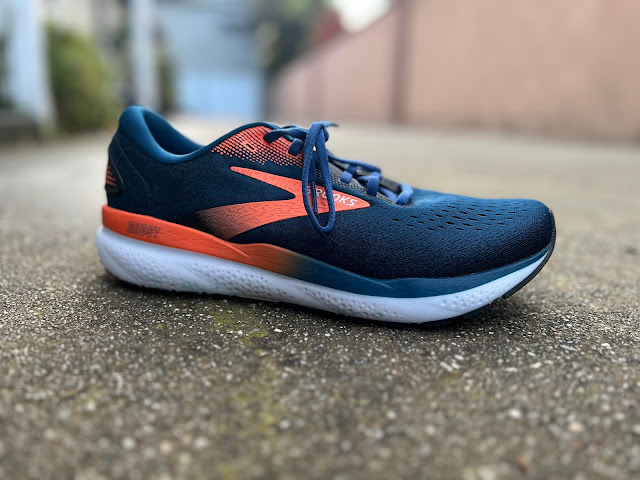Welcome
to our buyers guide for the footwear company, Hoka! Hoka has been one
of the fastest growing footwear companies globally and is known for
their high stacked, rockered shoes. In this guide we will discuss some
of the beginnings of the brand, their proprietary technologies, as well
as their current shoe lineup.
Guide to Hoka Running Shoes
Written by Senior Contributor David Salas and Content Manager Bach Pham
Content
About Hoka ↓ Jump to Section
Technology to Know ↓ Jump to Section
Hoka Running Shoe Line-Up ↓ Jump to Section
Our Hoka Recommendations ↓ Jump to Section
About Hoka
Some of Hoka's top athletes include long distance runners Aliphine Tuliamuk (Olympian, marathon), Luis Grijalva, Stephanie Bruce, and Kellyn Taylor. Hoka is particularly strong in the ultramarathon, with Jim Walmsley (Western States 3x champion, UTMB winner 2023) and Mike Wardian being a couple of their stars in the distance.
Metarocker. All Hoka shoes feature either an early-stage or late-stage rocker to help facilitate forward guidance. Typically, Hoka's faster shoes feature the early stage rocker while the training models feature a later stage rocker.
ProFly and ProFly+. Profly is a midsole (foam) compound that they use to make some of their performance shoes more responsive. The foam uses a softer top layer and a snappier bottom layer of foam to give a cushioned but responsive feel to it. This can be seen in Mach, Tecton X, Rocket X, Torrent, Carbon X, and Mafate Series. This can be used with a variety of material components drived at a similar mission.
"X". HOKA will use the suffix of X on a shoes name to designate whether or not it is plated. In most cases this would imply that shoe uses a carbon plate. Most of the plated designs do favor the high performance side, but is not completely exlusive to these lines. Shoes that use this would include the Rocket X, Carbon X, Tecton X, Mach X, and Transport X.
J-Frame. J-Frame is a support system that HOKA integrates into their stability model of the Arahi. The J-Frame is essentially a firmer casing of foam integrated with the regular foam under your foot in the midsole. The feel is a supportive wrap around the outside of your heel and down the midline of your foot.
H-Frame. Similar to J-Frame, this is a support measure. H-Frame can be seen in the HOKA Stinson 7 ATR and the HOKA Gaviota. The H-Frame is a firmer foam imbedded within the midsole that you cannot see. It essentially fills with an "H" shape or nearly an "8" shape, with the borders of the letter/number being the foam sections and the open sections being cutouts. This is designed with the goal of giving your guidance forward and some rigidity on the inside and outside of your foot.
Inherently Stable Design. Most current Hoka running shoes feature the combination of a wider base and sidewalls that help keep the foot centered on the platform. The rocker platform also helps with forward guidance.
Breaking Down the Hoka Running Line
Hoka Road Shoes
Clifton 9 (neutral daily trainer) - Hoka's staple training model for everyday runs. The model comes in many iterations whether you need a weather ready upper (GTX), a casual model for non-running uses, and more
Rincon 3 (lightweight daily trainer) - A very light training model for runners who prioritize lightness over durability
Bondi 8 (max cushion trainer) - Hoka's most cushioned road shoe, and a popular model for standing and walking as well
Arahi 7 (stability trainer) - A guidance-based trainer using the unique J-Frame system
Gaviota 5 (stable neutral max cushion trainer) - A max cushioned stability option that uses a H-Frame system for support
Bondi X (plated max cushion trainer) - A plated version of the Bondi 8 designed for longer distance training and for some racing
Hoka Trail Shoes
Zinal 2 (lightweight trail trainer) - A very lightweight, lower to the ground trail trainer that provides nimble movement
Torrent 3 (traditional trail runner) - For those who want a sturdy, traditional trail shoe from the brand for any distance
Speedgoat 5 (max cushion trail runner) - A very cushioned, comfortable, and protective trail favorite for Hoka
Challenger ATR 7 (road-to-trail trainer) - The Challenger features milder lugs underfoot which allows for on and offroad running in a fairly light package
Stinson 7 (super max cushion road-to-trail trainer) - A crossover 40+ mm max cushion shoe that is built for trails, but can do road as well
Tecton X 2 (trail racing shoe) - A carbon plated trail racer that's light and fast
Hoka Performance Shoes
Mach 6 (performance trainer) - A light, cushioned, and versatile trainer for just about any workout
Mach X (long distance performance trainer) - A plated performance trainer ideal for long run workouts
Cielo Road (super lightweight non-plated racing shoe) - A very light PEBA-based midsole that offers a non-plated racing option for runners
Rocket X 2 (carbon plated racing shoe) - Hoka's premier racing shoe for anything from 5k to marathon
Carbon X 2 (distance racing shoe) - A marathon and beyond oriented racing shoe that is great for steady, uptempo running
Best Daily Trainer: Clifton 9
The Hoka Clifton is the brand's most popular training model, and for good reason. The shoe provides a max cushion and lightweight feel. The upper in this version is more accommodating and less narrow through the midfoot and the latest midsole is updated to give it some more resilience. A good model for both beginners and long time runners alike.
Best Stability Model: Gaviota 5
The Hoka Gaviota 5 is the brand's stability max cushion training shoe. The latest model is a major update from top-to-bottom, starting with a new H-Frame design that features a dual-layer midsole. The H-Frame sits on the top layer, forming an figure-8/letter H-ish shape through the shoe to create stability through both sides. The midsole features a softer CMEVA midsole than past models to create a highly comfortable cruising ride thanks to Hoka's signature early rocker design.
Best Performance Trainer: Mach 6
This is a great model for runners who want a combination of light, fast, and cushioned. The latest version adds some outsole to provide more durability than previous models.
Best Max CushionTrail Shoe: Stinson 7
The HOKA Stinson 7 is a maximum cushioned training shoe for logging big mileage. The shoe is unique in that it is designed specifically for all terrain use, including road and trail. The shoe uses an H-frame foam insert to help keep things centered and cushioned. The shoe also uses multi-directional lugs and a secure upper to help with off-roading. The shoe is a classic high-stack rockered shoe from the company with some trail and stability specific elements.
Best Racing Shoe: Rocket X 2
The Hoka Rocket X 2 is first true super shoe. A new dual-layer PEBA midsole provides a fast ride with more bounce in the heel and an aggressive forefoot to push off from. The upper is light and secure despite not having a heel counter. While on the firmer side for super shoes, the Rocket X 2 checks off all the boxes for a fast, inherently stable, and aggressive racer.
Have questions? Send us an email at doctorsofrunning@gmail.com
Thanks for reading!
More Shoe Brand Guides
Guide to Mizuno Running Shoes
Guide to New Balance Shoes
Guide to Newton Running Shoes
Guide to On Running Shoes
Guide to Puma Running Shoes
Guide to Saucony Running Shoes
Guide to Salomon Running Shoes
Guide to Topo Athletic Shoes
Running Shoe Resources
Looking for something more specific than the archive? Check out these pages first:
Beginner's Guide to Running Shoes: Are you a brand new runner and unsure where to start? Visit this guide first to get started.
Stability Shoe Resource Page: Our comprehensive guide to stability shoes and alternatives for neutral runners as well
Carbon Fiber Plated Shoes Resource Page: Want to go as fast as possible for race day? Visit this page for all of our super shoe reviews
Guide to Walking Shoes: Featuring some science behind walking and the best running shoes for walking based on our everyday testing and clinical experience working with patients.
Getting the Right Fit: Unsure if your shoe fits? Visit this page to help you determine how to find the right shoe for your feet. Comfort is one of the most important things we emphasize at Doctors of Running before you get out the door and on the road. Sometimes the right shoe for you is not what works for many others. That is why it is important to try different shoes when you can to get a better understanding of works best for your needs.
Beginner's Guide to Nutrition/Hydration: Guest writer Jennifer Giles (Registered Dietitan/Nutritionist) helps bring a new guide for fueling to Doctors of Running as part of our summer hydration series.
Ultimate Guide to Hydration Products for Runners: We review 10+ hydration products that may help you on your running adventure.
Best Affordable Running Shoes: We compiled a list of the most affordable options you can find in the market today. Updated monthly.
Follow Doctors of Running on Social Media
Facebook: Doctors of Running
Youtube Channel: Doctors of Running
Instagram: @doctorsofrunning
LinkedIn: Doctors of Running
Strava: Doctors of Running
Podcast: Virtual Roundtable
Pinterest: Doctors of Running
Read More: Running Shoe Reviews












